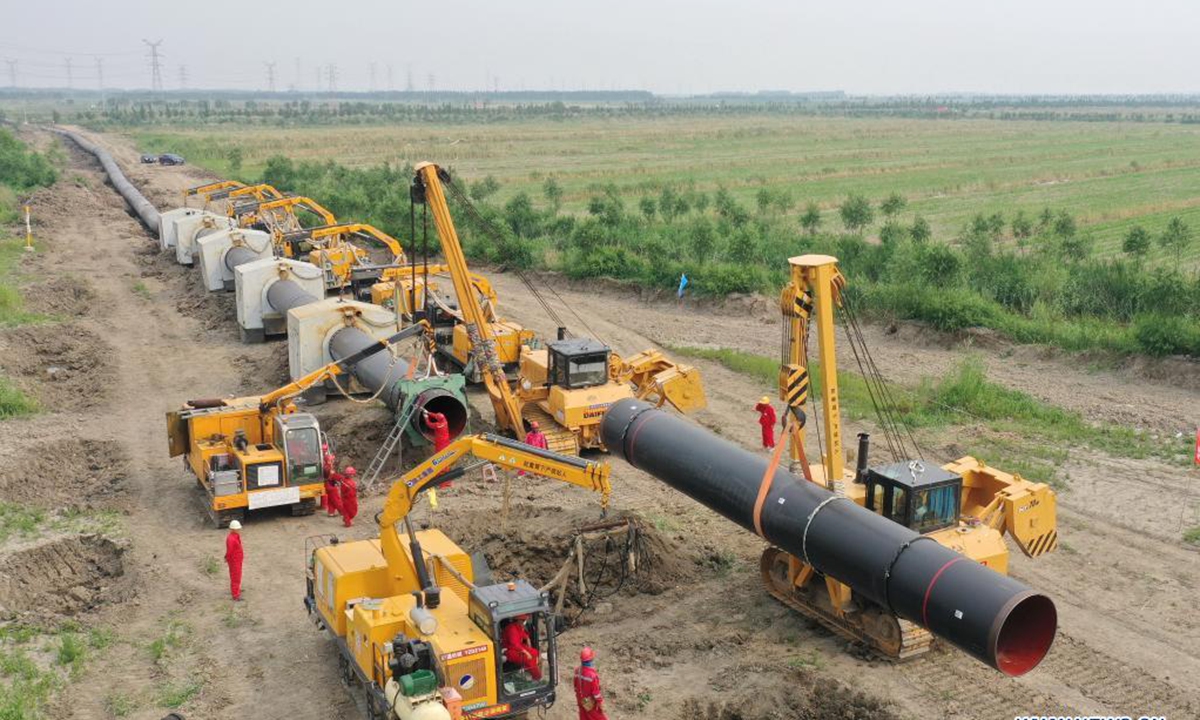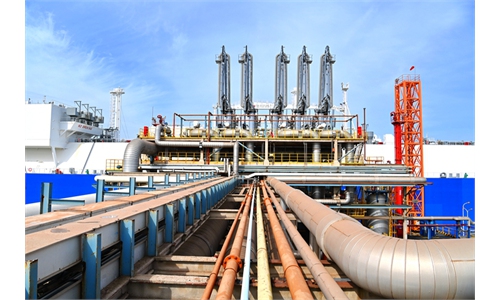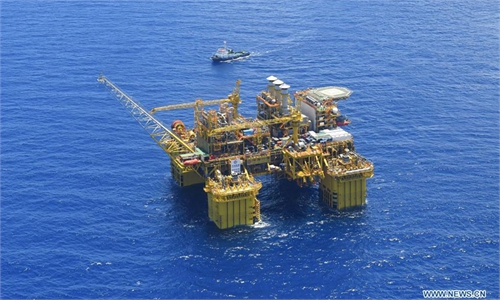China’s longest coal-bed methane pipeline completes, adding new momentum to natural gas supply

Aerial photo taken on June 24, 2021 shows workers installing pipe sections at a construction site for the outbound pipeline of a liquefied natural gas (LNG) receiving station, in Wanglanzhuang Township, Fengnan District, Tangshan City of north China's Hebei Province. This 176.18-kilometer pipeline, when finished, is expected to duct natural gas from the Xintian LNG receiving station in Caofeidian District of Tangshan to Baodi District of Tianjin, also in north China. (Xinhua/Yang Shiyao)
The section from North China's Shanxi Province to Hebei of China's longest coal-bed methane long-distance pipeline has completed its drying process, marking the official completion of the main pipeline, which can supply 200 million cubic meters of natural gas to northern China this winter and next spring, China National Offshore Oil Corporation (CNOOC) announced on Monday through its official WeChat account.
The Shanxi-Hebei section of the coal-bed methane pipeline starts from Lüliang in Shanxi and reaches Hengshui in Hebei, spanning a total length of 548.95 kilometers and a total capacity of 5 billion cubic meters per year.
Since the first section was opened at the end of July, the Shanxi-Hebei section has been supplying about 100 million cubic meters of natural gas to Hebei. Analysts said that the completion will further ensure the country's stable gas supply during winter and spring, as well as adjusting China's overall energy structure.
The whole pipeline spans three Chinese provinces including Northwest China's Shannxi Province, Shanxi and Hebei, with the length of 622.98 kilometers. After the full completion, natural gas from eastern Shaanxi and western Shanxi can be delivered to thousands of households and industrial clusters in Beijing, Tianjin and Hebei, as well as Xiongan New Area, south of Beijing.
The pipeline may also be connected to the Tianjin liquefied natural gas (LNG) terminal to achieve a dual gas complementary, which will contribute to the regional peak and supply security, as well as providing safe, low-carbon and efficient clean energy for northern China.
Global Times



